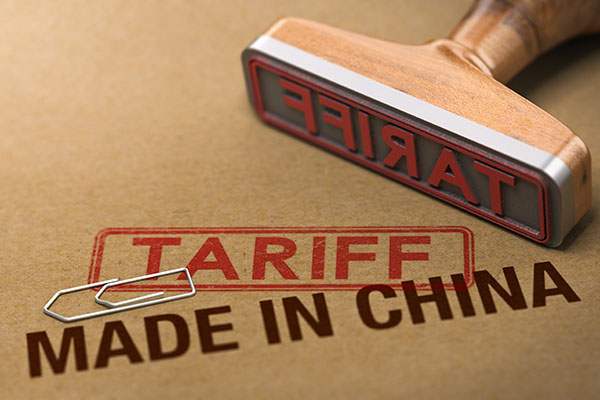NRF’s Shay pens letter to President Biden, calling for tariff relief

Not long after President Biden stated that the White House is discussing dropping tariffs levied against China by his predecessor Donald Trump, the Washington, D.C.-based National Retail Federation (NRF) penned a letter to Biden to “request immediate tariff relief to address the ongoing inflation facing American businesses, workers, and consumers.”
When the Trump administration first rolled out its tariff plan in mid-2018, it was comprised of a 25% tariff on $50 billion worth of goods imported from China, under the guise of an “America First” policy geared towards a more fair and beneficial position for U.S. companies, as well as focusing on: protecting domestic property and intellectual property; stopping noneconomic transfers of industrially significant technology and intellectual property to China; and enhancing access to the Chinese market.
By early 2020, it became increasingly clear that tariffs had not resulted in an improving trade outlook, in that industry stakeholders indicated tariffs had strained global supply chain operations to a large degree, while creating confusion and tension for shippers needing visibility and consistency within their supply chains.
That situation has been played out at various times in recent years, with importers “pulling forward” China-manufactured goods into the U.S. in order to get ahead of scheduled tariff increases and has been viewed as a key driver of tariff-related uncertainty. Another byproduct of the tariff tension, or U.S.-China “trade war” has been seen in sourcing upticks from other Asian manufacturing hubs such as Vietnam, Malaysia Singapore, and Thailand, among others.
The thesis of the NRF’s letter penned by its president and CEO Matthew Shay focuses on the need for tariff relief to address the ongoing inflation situation, now at 40-year highs.
“Consumers and businesses continue to feel the pain of higher prices across the board from everyday goods and services to rent and groceries and gas,” wrote Shay. “Removing the harmful China 301 tariff will alleviate some of the inflationary pressure on the U.S. economy. The current surge in inflation is caused by many factors, and it will require a careful balance of fiscal and monetary policy solutions to bring it under control. We have noted the administration’s recent policy recommendations regarding inflation, and we respectfully observe that one of the most effective and meaningful tools—tariff relief—has not yet been put forward. This is a missed opportunity. Inflation is likely to linger in the economy for many months. The steps being taken by the Federal Reserve—shrinking its balance sheet and raising interest rates—are primary tools to reduce demand for goods and services so that price increases moderate. Unfortunately, this could further hurt businesses, workers and consumers.”
What’s more, Shay made it clear that providing tariff relief would reduce the Consumer Price Index by 1.3 percentage points and help to “alleviate inflation,” adding that tariffs have not achieved their desired goal of pressuring China to change its trade policies. And he also echoed a theme that has been made by myriad supply chain stakeholders, calling tariffs a “tax that that paid by the U.S. importer, not China.”
And since the tariffs have gone into effect, Shay said that U.S. Customs and Border Protection has collected nearly $136.5 billion from U.S. importers, with U.S. firms and consumers bearing most of the costs, whereas China has ponied up for only 7.6% of the total cost.
“Overly broad action by the Fed alone could inflict significant and lasting damage to consumers,” wrote Shay. “Providing tariff relief now can alleviate inflation pressures in the economy and provide targeted relief to consumers until the Fed’s job is done.”
While they did not appear to receive a lot of attention during President Biden’s earlier days in office, tariffs have not gone anywhere, to be sure. And they are now front and center, with lowering or removing them altogether could serve as a key element in helping the nation to overcome its current inflationary woes.

Article Topics
Latest in Logistics
Descartes announces acquisition of Dublin, Ireland-based Aerospace Software Developments Amid ongoing unexpected events, supply chains continue to readjust and adapt Shipment and expenditure decreases trend down, notes Cass Freight Index March trucking tonnage trends down, reports ATA FTR Shippers Conditions Index enters negative territory DAT March Truckload Volume Index sees modest March gains National diesel average, for week of April 22, is down for the second straight week More LogisticsAbout the Author
Subscribe to Logistics Management Magazine

Find out what the world's most innovative companies are doing to improve productivity in their plants and distribution centers.
Start your FREE subscription today.
April 2023 Logistics Management

Latest Resources














